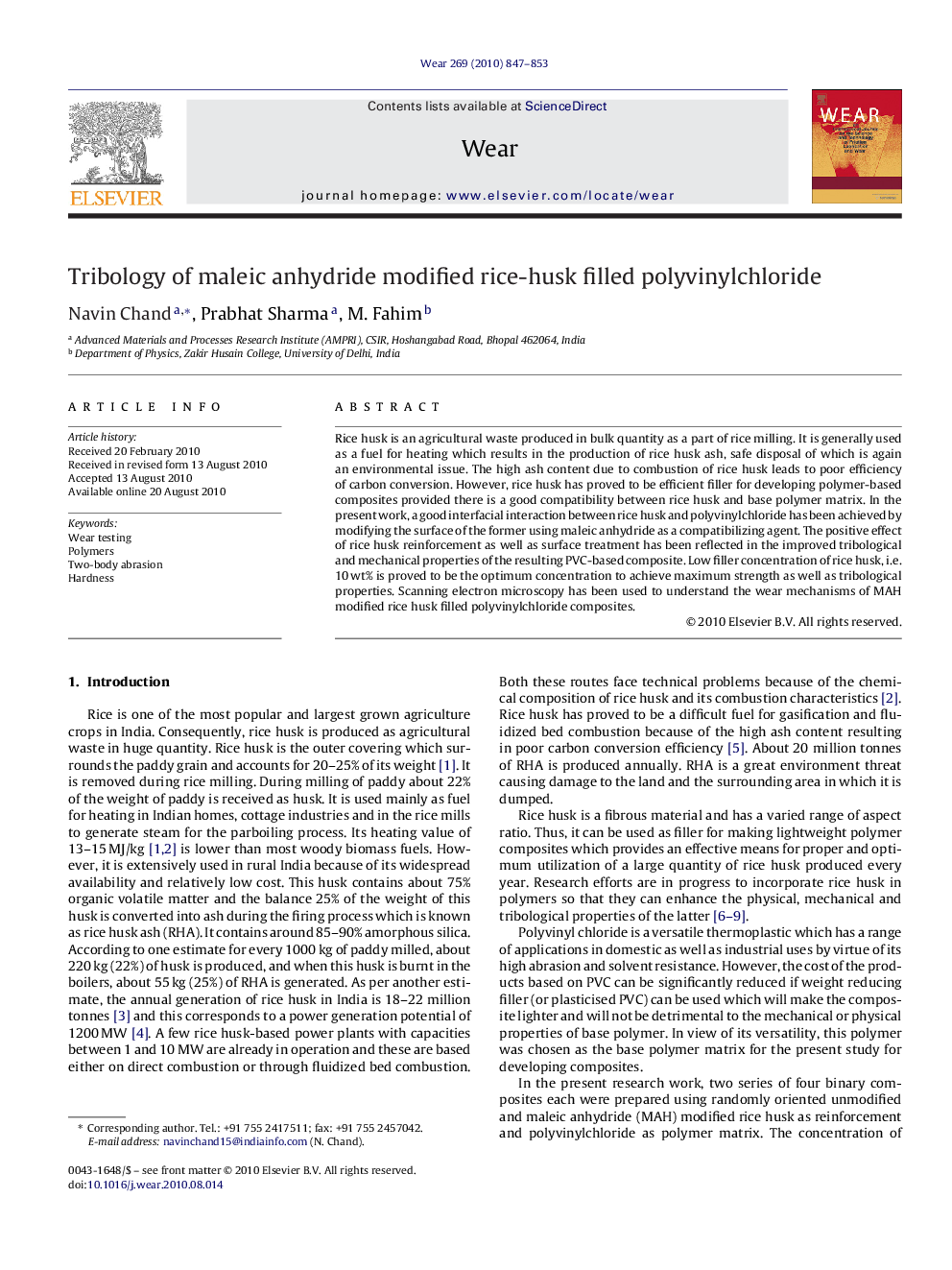| کد مقاله | کد نشریه | سال انتشار | مقاله انگلیسی | نسخه تمام متن |
|---|---|---|---|---|
| 618500 | 1455030 | 2010 | 7 صفحه PDF | دانلود رایگان |

Rice husk is an agricultural waste produced in bulk quantity as a part of rice milling. It is generally used as a fuel for heating which results in the production of rice husk ash, safe disposal of which is again an environmental issue. The high ash content due to combustion of rice husk leads to poor efficiency of carbon conversion. However, rice husk has proved to be efficient filler for developing polymer-based composites provided there is a good compatibility between rice husk and base polymer matrix. In the present work, a good interfacial interaction between rice husk and polyvinylchloride has been achieved by modifying the surface of the former using maleic anhydride as a compatibilizing agent. The positive effect of rice husk reinforcement as well as surface treatment has been reflected in the improved tribological and mechanical properties of the resulting PVC-based composite. Low filler concentration of rice husk, i.e. 10 wt% is proved to be the optimum concentration to achieve maximum strength as well as tribological properties. Scanning electron microscopy has been used to understand the wear mechanisms of MAH modified rice husk filled polyvinylchloride composites.
Research highlights▶ An alternate utilization of rice husk can be as a weight reducing filler to develop lightweight polymer composites. ▶ The positive effect of surface treatment is reflected in the improved mechanical properties of the resulting polymer composite. ▶ In the present work, low (i.e. 10 wt.%) as well as high (i.e. 20 to 30 wt.%) filler concentration of MAH treated rice husk were used to develop polyvinylchloride (PVC) composites. ▶ It was observed that 10 wt.% filler proved be the optimum concentration to achieve maximum strength as well as tribological (abrasive wear resistance) properties among composites. ▶ The composites were characterized on a pin-on-disc machine against silicon carbide (SiC) abrasive paper of different grits at different pressure-velocity (PV) values and weight loss measurements were used to calculate abrasive wear resistance.
Journal: Wear - Volume 269, Issues 11–12, 28 October 2010, Pages 847–853